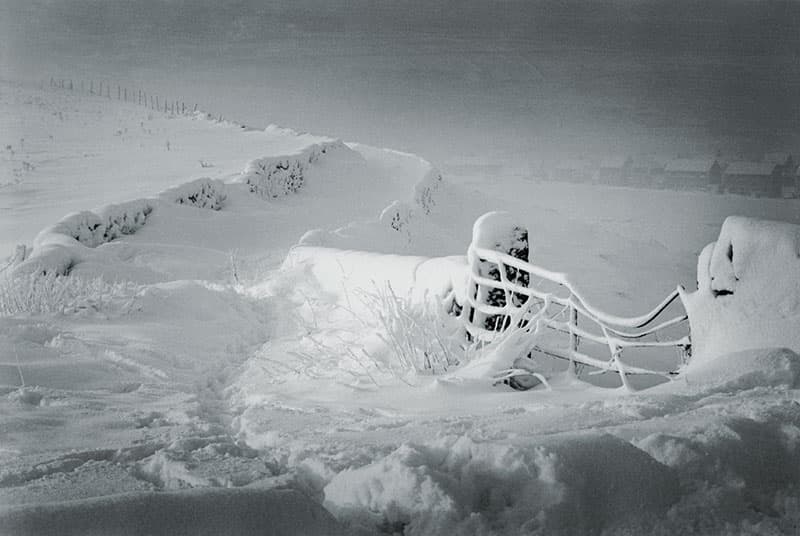Photo Insight bringing you essential expert advice every week

A renowned photographer, tutor, author and Ilford Master Printer, Andrew Sanderson offers practical tips on working with film and traditional darkroom techniques
As winter draws closer, Andrew Sanderson reveals how you too can capture stunning snow scenes
It might seem strange talking about snow since we haven’t had any yet, but it’s always worth thinking about scenes that will look great once the snow has settled so you can go back and take that winning shot. By scouting locations in the autumn, when the snow does fall you will already know what you need to do to capture a great shot.
This landscape of an old gate covered in snow was taken in 1983, but it wasn’t winter – it was 20 October! This year we have had a very warm October, but the year that this was taken we had freak conditions that included a surprise snowstorm.
In Holmfirth, West Yorkshire, where I live and where I lived when this was taken, we do get some pretty spectacular winters as we are very close to the Pennines. However, even we don’t normally get our winters in October! So as soon as I’d spotted these conditions, I took the opportunity to go out and take a few landscape photos. I walked out of the town after breakfast to find a higher location to see if there were any scenes that hadn’t been walked or driven over. This is a great tip for taking ‘clean’ landscape shots. The earlier you go out, the more likely you are to find these unspoiled fields of snow. Although there is some evidence of other walkers in this image in the snow on the left, the snow on the gate is undisturbed and the footprints that are present do not distract or detract from the composition.
About a mile out of town, and at the point where Stake Lane bank, Cinderhills Road and Sandygate meet, there is a track leading off in a south-westerly direction. Looking at this from the road, the thick layer of snow was still lying fairly unspoiled, apart from evidence of a few early morning dog walkers. The low sun was giving a beautiful light to the bent gate and highlighting the tops of the drifts of snow. Coupled with this, there was a slight mistiness in the air, which was helping to subdue the background – an estate of modern houses that wasn’t particularly photogenic for this type of photography.

Snowy Gate by Andrew Sanderson
I immediately stopped when I saw the gate and knew it was a great shot. If I’d been driving that day instead of exploring on foot, I probably would have missed the opportunity. Driving up from town, the track would only have been visible if I’d been driving while looking over my right shoulder, so I would have gone right past it. A little bit of local knowledge comes in handy in these situations, and as I said before, if you have found a location before the snow comes, you can quickly revisit it when the conditions are right.
I had two cameras in my bag on this day: one with colour negative and one with Ilford XPI Chromogenic black & white film. Both cameras were fitted with standard lenses, and I took one picture on each and then continued on my way to find some more locations. I didn’t find anything else that could match the scene I’d recorded, and as I passed the gate on my way home the scene had already changed as someone had pushed the snow off the gate and tramped all over the foreground. I was glad that I’d got the shot. I obviously hadn’t been the first on the scene, but I’d caught it just in time before the scene was spoiled from a photographic point of view.
In the darkroom, when the negatives had been processed, I darkened the sky slightly and subdued the foreground. However, there wasn’t much that needed to be done to this photo, or to the colour neg from my other camera that I had taken with me on that day. The strength of the black & white scene is in the beautiful lighting from the low early morning winter sun, and the fact that most of the areas of interest are in a diagonal from top left to lower right. Pure black and bright white appear in the most important part of the shot and the background is muted grey. The corresponding colour image that was taken the same day works very well too. The snow shadows are all blue and the side lighting is warm orange, giving a lovely glow.

Andrew Sanderson was talking to Debbi Allen

If you would like to read more about paper negatives, Andrew’s book Paper Negative Photography is available from www.blurb.com, price £15








